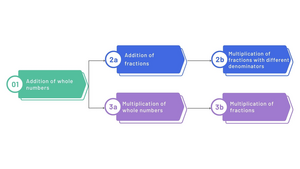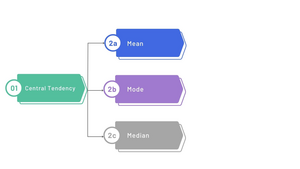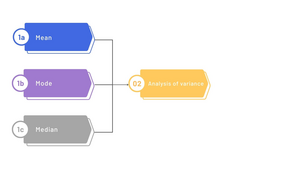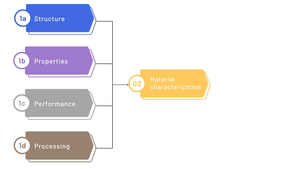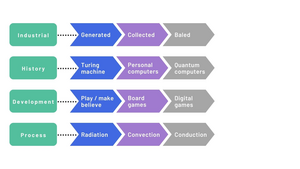Create a course structure
Creating a course structure requires some knowledge on how information is presented. This page aims to enable lecturers to create a clear and concise course structure that is intuitive for students.
Why a structured course is important
"There are multiple ways to tell your story.” This might sound obvious since you have to think about the approach whenever you prepare or teach a course. It is up to you to find one which matches both the content and learning goals. This will result in a clearer, easier-to-follow, and more structured story, and will benefit the learning process of your students.
The different ways to tell a story
There are various strategies to structure your content. You are probably already using them in some form or manner. The examples below highlight specific relationships between concepts and provide a general description of their respective sequencing strategy. Remember that these strategies are not mutually exclusive and deliberate combinations or overlap might even benefit the student.
-
The identifiable prerequisites are simply the skills and knowledge that a student needs to master before they move on to the next (more complex) task. As the initial tasks are a prerequisite, it is important that students have the opportunity to test their mastery level (e.g. formative assessment).
-
Here we first teach about the known and then move on to the unknown. In other words, we start with what the student is most familiar with and then progress to something new and unfamiliar. In a similar fashion, we can refer to the use of analogies to explain this concept of familiarity.
-
This is a hierarchical relationship where you address the topics from top to bottom, left to right. It is a breadth first, depth second approach where the whole level is explored before moving on to a more concrete or detailed level.
-
A similar hierarchical approach but instead we start with something concrete (or simple) and then move on to something more abstract (or complex).
-
Here the order is determined by its chronological occurrence in time. The concept itself might be straightforward, but there are variations you can consider:
- Industrial/Production
- History
- Development
- Process
General recommendations
It is recommend to structure the course using modules and submodules that that each have a unique number as part of their title. In this structure, for clarity purposes, it is recommended to use no more than two levels: modules, and submodules. An example of a course structure where all modules and submodules have a unique number as part of their title is shown below.
37293 – Microeconomics
- 1. Introduction to the market and the concept of economic rationality.
- 2. Consumer Theory
- 2.1 The budget
- 2.2 Preferences and Utility
- 2.3 Choice
- 2.4 Individual demand (for goods and services)
- 2.5 Labour supply
- 3. Market equilibrium
- 3.1 Market demand
- 3.2 Market equilibrium and the implications of taxes on consumption
- It is a best practice to continue the numbering to the content items in the (sub)modules. This will allow you to easily refer to other content items within the course (i.e., ‘You can find more information in 2.2.3’).
- Lastly, it is recommended to clearly communicate the expectations regarding the content items to students (e.g., by adding a description to the content item). Being aware of the function of a content item allows students to quickly assess the importance of the item and make a decision on how to use it.
Next step
When you have created a course structure, aligning the course assesment plan would be the next step.
Relevant resources
- Course Graph: An applet to develop interactive concept maps of your course content, to visualise the main concepts of the course and their relations to students.
- Brightspace Matrix: An interactive rubric that can be used to evaluate both the setup and structure of your Brightspace course.
How to get help
Do you need help creating your course structure? Reach out to the educational advisors at your faculty or contact Teaching Support for one-on-one guidance.
References
Morrison, G. R., Ross, S. J., Morrison, J. R., & Kalman, H. K. (2019). Designing effective instruction. John Wiley & Sons. (Chapter 6 – Sequencing)
Need support?
Get in touch with us! We are happy to help.
